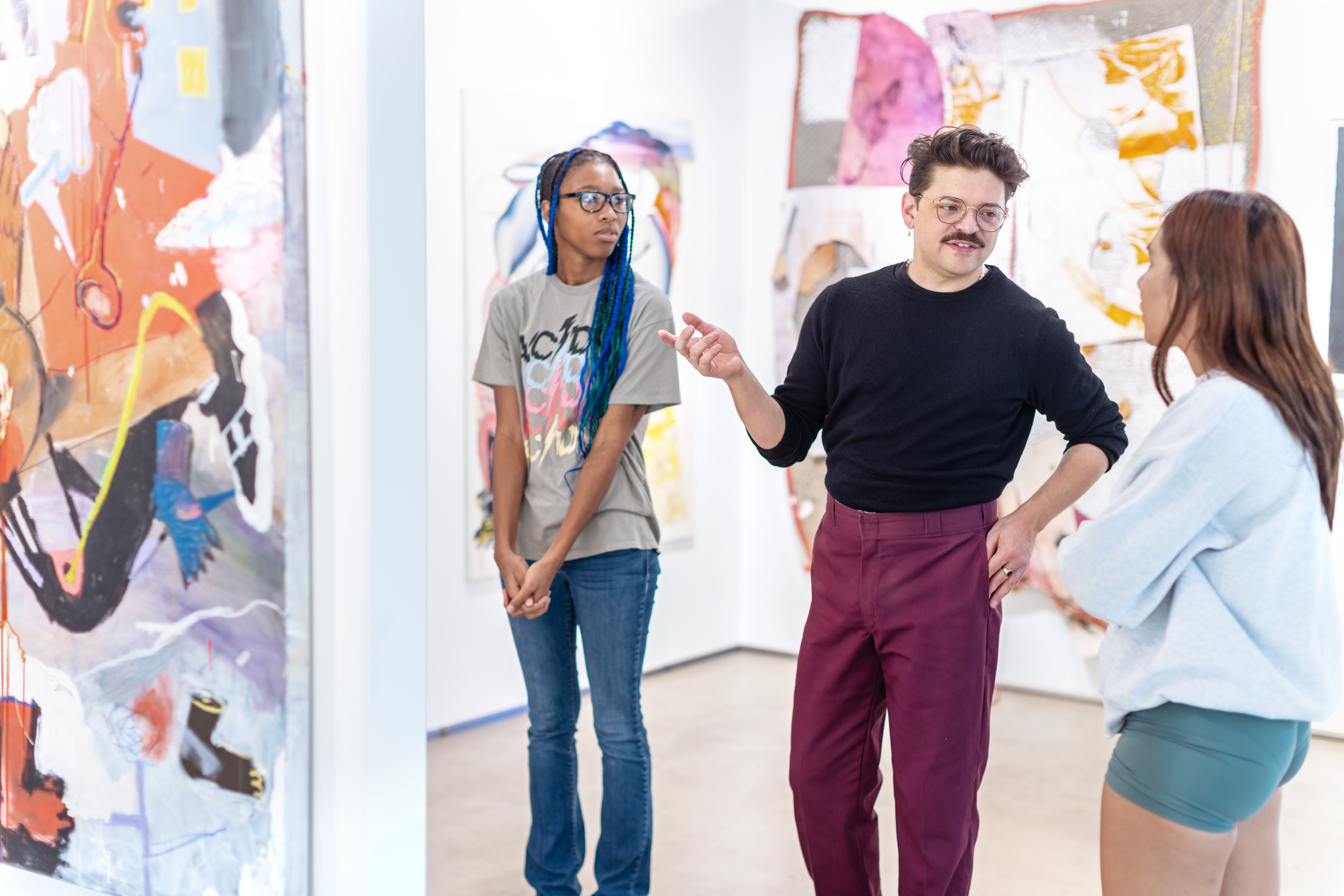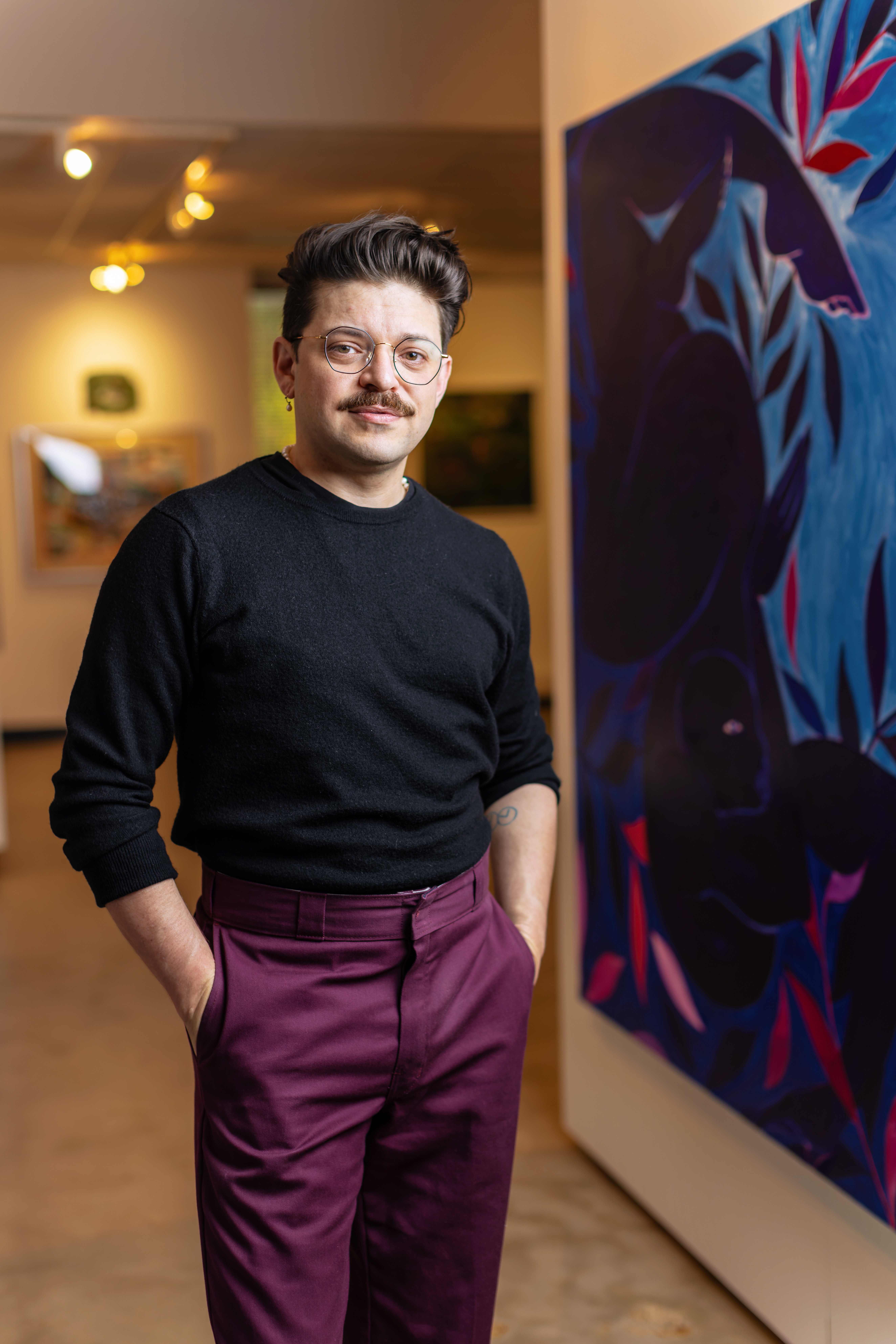
By Matthew Harris '20
Raised in rural Arkansas, Joel Parsons ’07 envisioned himself as an English major until a painting class led by Erin Harmon altered his course entirely. With her encouragement, he embraced a newfound passion that eventually transformed him into an art major whose work has been exhibited both nationally and internationally.
“Growing up where I did and the way I did, I didn't know it was possible to be an artist. I never went to museums. I didn't have real experience in the art world, and so through just taking a few classes and getting involved in the art department here, I found this whole new way of thinking and being.”
After graduating, Parsons embarked on a year-long journey through the Watson Fellowship, which allowed him to travel and collaborate with artists in five countries on four continents. He then received a Master of Fine Arts on a President′s Fellowship from the sculpture department at the School of the Art Institute of Chicago.
Back in Memphis, Parsons worked at the Urban Art Commission and the Metal Museum, gaining valuable experience that would shape his future. Although rewarding, an opportunity at Rhodes College—a one-year position at the college’s Clough-Hanson Gallery—piqued his interest. He returned to Rhodes as a part-time faculty member and to serve as the director of the gallery for the 2013-2014 academic year—and has been here ever since.
It’s been a full-circle experience for Parsons. “It's special to come back and join the department that shaped me, and now to be colleagues with these amazing people that I worked with previously as a student. That's meaningful to me as well, to be part of that transformational experience for generations of more students.
“I was truly a product of the liberal arts; I had amazing teachers in English and religious studies. I think that's the best way for a young artist to be trained. Artists should have that breadth and should be able to write and think and articulate, and I don't think there's a better way to do that than the liberal arts.”

For Parsons, being an art professor isn't just a profession; it's a lifelong commitment to nurturing creativity, shaping futures, and building enduring relationships that echo far beyond the confines of the classroom.
“To me, the number one thing is the relationships that we get to build with students. There's nothing better than seeing a student kind of figuring things out: “What's my place in this institution and what's my place in this class and in this department?” And then you get to work with them again, or maybe become their advisor, and before you know it, you’re helping them install their senior thesis show in the gallery, looking at this art that they've made and this full expression of who they are and how they've grown.”
Parsons has brought many shows to the Clough-Hanson Gallery, but his most recent, The Young, Gifted and Black exhibition, has meant the most to him. The exhibition was organized in partnership with the Memphis Brooks Museum of Art, which presented Black American Portraits concurrently with the Clough-Hanson exhibit. Parsons coordinated a full season of related programming for the exhibition, including artist talks, panel discussions, and a course through the Meeman Center for Lifelong Learning.
“I think that the ambition and the scale of the show elevated every aspect of what the gallery does. I developed robust partnerships around Memphis so that we could use this show as a bridge to the Memphis community. We had to bring in the walls; we had to plan extra time into the calendar to facilitate, install, and de-install. I think that the scale, the number of works, the size of works, necessitated taking everything to the next level.”
The exhibition, which is composed of works from the private collection of art collector, patron, educator, and advocate Bernard Lumpkin, features pieces from well-known artists such as David Hammons, Kerry James Marshall, Mickalene Thomas, Henry Taylor, and Kara Walker, as well as a younger generation gaining wider recognition, including Tunji Adeniyi-Jones, Sadie Barnette, Cy Gavin, Chase Hall, Jennifer Packer, and others.
“Every time I walk past the gallery, I still get a little rush seeing the artists that are represented there and thinking about the students who get to experience that show and being able to bring classes in and planning events around it. These are artists who I learned about in classrooms at Rhodes College and it’s humbling to be the person to present it to the world.”